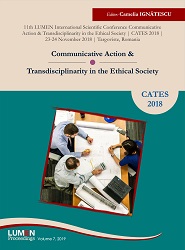Understanding the Usage Characteristics of Twitter in the UK Universities: A Social Network Analysis (SNA) Approach
Understanding the Usage Characteristics of Twitter in the UK Universities: A Social Network Analysis (SNA) Approach
Author(s): Bakan Ufuk, Ugur Bakan, Turgay Han
Subject(s): Education, ICT Information and Communications Technologies
Published by: Editura Lumen, Asociatia Lumen
Keywords: Social Network Analysis; Twitter; UK; high education;
Summary/Abstract: The rate of use of social media platforms such as Facebook, Twitter, and LinkedIn has increased drastically over the last decade. Twitter is the eighth most popular website in the world, with an average of nearly eleven million hits a day. Twitter may be used for synchronous and asynchronous online conversations, asking and answering questions, and sharing opinions, ideas, and resources. Twitter also offers a platform for quick communication that could play a role as a catalyst for the learning process. This paper presents an investigation into the use of the Twitter social media platform by selected top universities in UK. Twitter data from that account in the 1-year period was captured. First was coded, the total number of tweets, like ranking, usable (non-spam) tweets, the number of retweeted, hashtags and tweets on the official Twitter accounts of selected universities. In this study, NodeXL program was visualized and analyzed by drawing the data from Twitter. As such data sets of no more than 2,500 tweets were gathered for each search topic. After 60 years of experience with computer-based text analysis approaches can be used to define rule-based classification, theme extraction, ontology/taxonomy modeling, topic categorization and document summarization. Statistics (degree and weighted degree, centrality statistics, network diameter, graph density, average path length) were then calculated for each node and for the network using the statistical module of NodeXL. The data were visualized using Fruchterman-Reingold and Harel-Koren Fast Multiscale algorithms as shown in the figures below. The implications of this finding are discussed
Book: Communicative Action & Trandisciplinarity in the Ethical Society
- Page Range: 42-58
- Page Count: 16
- Publication Year: 2019
- Language: English
- Content File-PDF

